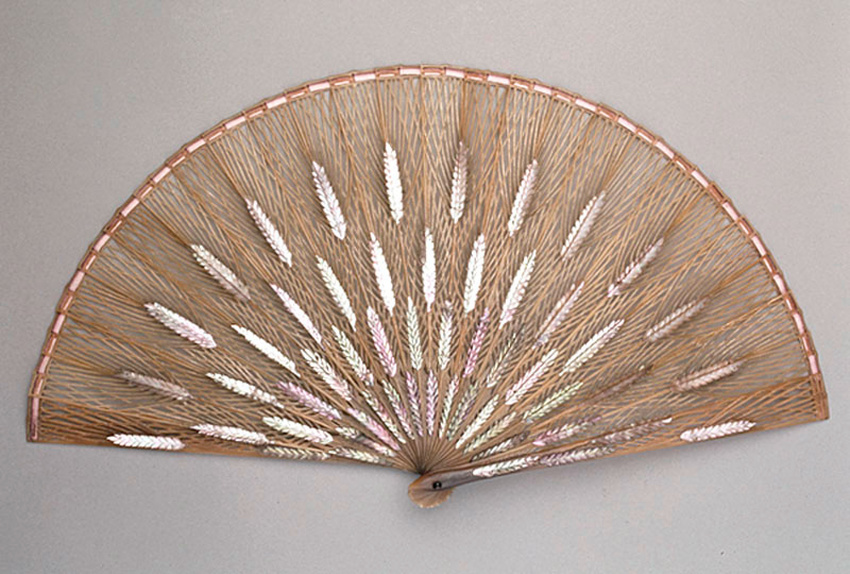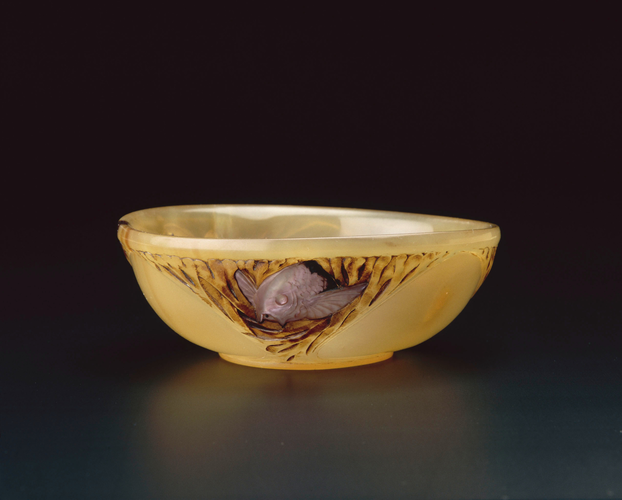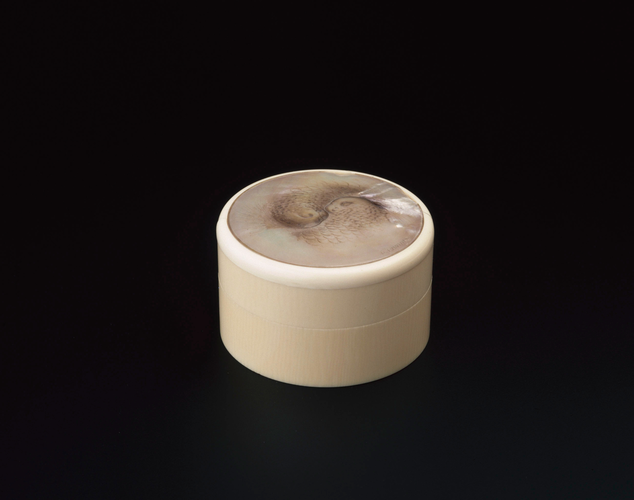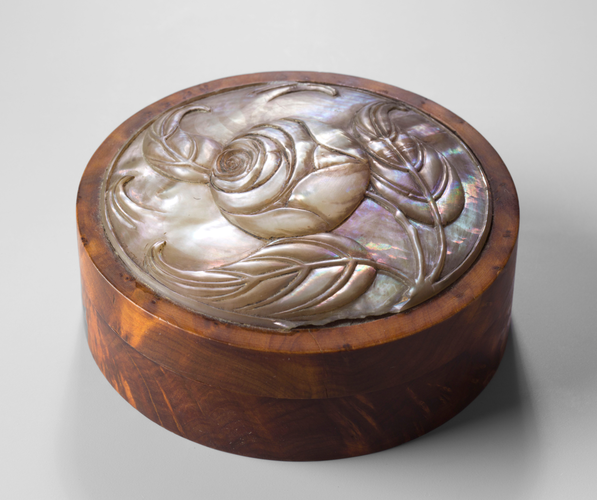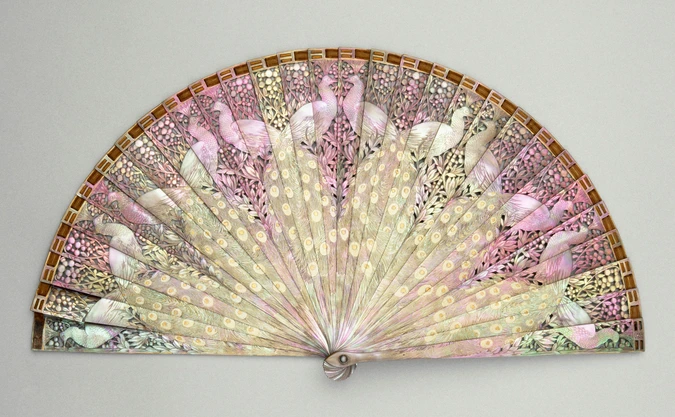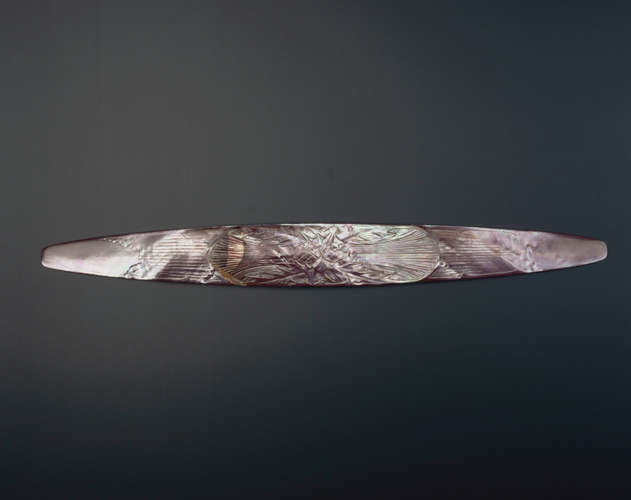Epis d'orge
Georges Bastard’s family had been making chessboards and inlaid ware for generations; his grandfather Bastard-Lannoy, a specialist in working with the precious wood, ivory and other materials used for items such as chess boards, enjoyed great success at the Universal Exhibition in Paris in 1867 with the monture of a fan, Diana Bathing. Trained at the Ecole des Arts Décoratifs, Paris, he regularly exhibited at the Salon de la Société des Artistes Français after 1902 and had attracted attention with objects made from very delicate materials such as mother-of-pearl, tortoiseshell and ivory. He produced a large number of boxes, paper knives, candy boxes, bowls and jewellery as well as many fans. This Barley Ears fan was exhibited at the Salon de la Société des Artistes Français in 1911.
With great refinement, the sticks of the fan are completely covered with horn and incrustations of mother-of-pearl figuring the barley ears, leaving none of the fabric visible. The fan turns a warm blond colour in the light with astonishing glints and gleams.
Admired by the critics, the fan was bought by the State in 1912 for the Musée du Luxembourg. Although his Art Nouveau period was remarkable, Bastard was no less a major figure in Art Deco and the Union des Artistes Modernes in the 1920s and 1930s.

